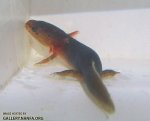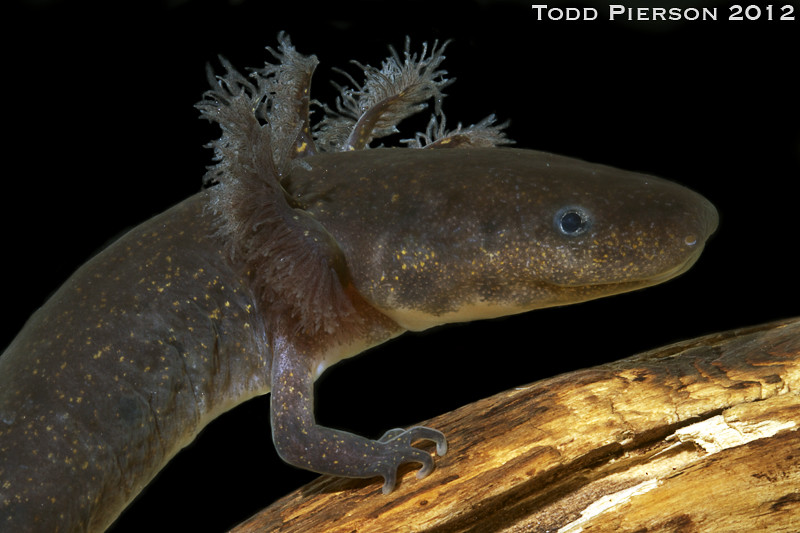mattknepley
New member
- Joined
- Feb 6, 2013
- Messages
- 8
- Reaction score
- 0
- Points
- 0
- Location
- South Carolina
- Country
- United States
Hi, and thanks for checking this out. I'm new here, and to caudates in general. I did post a "get to know me" bit in the new members section.
I'm hoping you can help me id this wee beastie. I am more of a native fish fan, and belong to the North American Native Fishes Association. (A really good organization, if I may plug them :happy Some friends and I were seining a tiny stream in the Athens, GA area. We turned up many tiny, nondescript salamanders or newts while chasing darters and shiners. Then this guy showed up. We have shopped its picture around on our forum, and the two prevailing opinions are it's a dwarf mudpuppy (Necturus punctatus) or a larval Ambystoma of some kind. What we DO agree on is that we are no salamander experts, and should find someone who is.
Some friends and I were seining a tiny stream in the Athens, GA area. We turned up many tiny, nondescript salamanders or newts while chasing darters and shiners. Then this guy showed up. We have shopped its picture around on our forum, and the two prevailing opinions are it's a dwarf mudpuppy (Necturus punctatus) or a larval Ambystoma of some kind. What we DO agree on is that we are no salamander experts, and should find someone who is.
So, what is it? Again, it turned up in a tiny Athens, GA stream in early February of this year. The stream alternated between small, mild riffles and knee deep pools. Much of the bottom was rock, but there were some areas with softer substrate and leaf litter. The other salamanders/newts we turned up were about the same size or smaller, but did not have external gills. The stream is not pristine, being subject to road and construction run-off. Sorry this is the only picture I have of it. Better looks at its feet may have been useful.
Thanks for your interest!
Matt
I'm hoping you can help me id this wee beastie. I am more of a native fish fan, and belong to the North American Native Fishes Association. (A really good organization, if I may plug them :happy
So, what is it? Again, it turned up in a tiny Athens, GA stream in early February of this year. The stream alternated between small, mild riffles and knee deep pools. Much of the bottom was rock, but there were some areas with softer substrate and leaf litter. The other salamanders/newts we turned up were about the same size or smaller, but did not have external gills. The stream is not pristine, being subject to road and construction run-off. Sorry this is the only picture I have of it. Better looks at its feet may have been useful.
Thanks for your interest!
Matt



